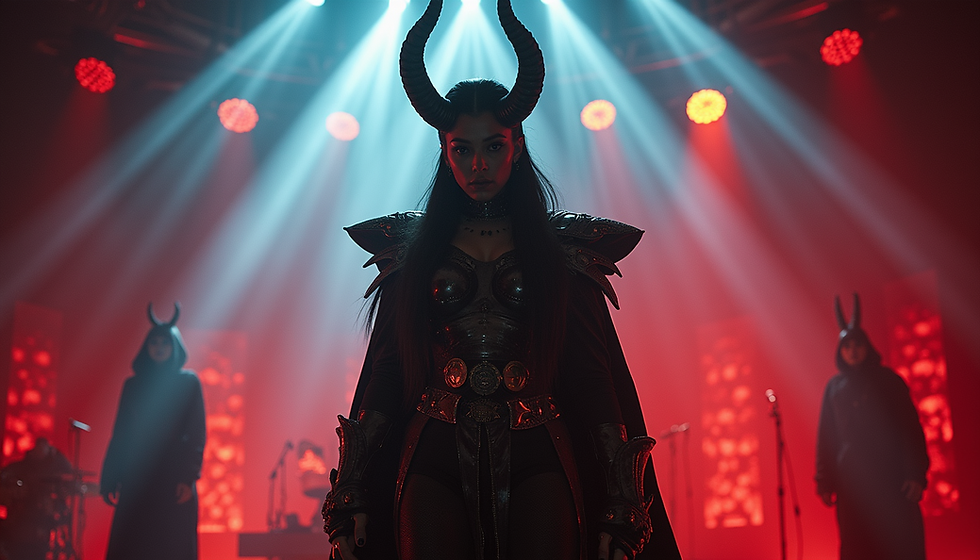Demon Slayer Box Office Success Secrets Unveiled
- Joseph Fanning
- Nov 22
- 3 min read
The Demon Slayer franchise has taken the entertainment world by storm, breaking records and captivating audiences globally. Its box office success stands out as one of the most remarkable achievements in recent anime history. What factors contributed to this overwhelming popularity and financial triumph? This post explores the key elements behind the Demon Slayer box office hit, offering insights into how this anime became a cultural phenomenon.

Strong Storytelling and Emotional Depth
At the heart of Demon Slayer’s success lies its compelling story. The narrative follows Tanjiro Kamado, a young boy who becomes a demon slayer after his family is slaughtered. The story blends action, tragedy, and hope, creating an emotional connection with viewers. Unlike many action-packed series, Demon Slayer balances intense battles with moments of vulnerability and character growth.
This emotional depth encourages viewers to invest in the characters’ journeys. For example, Tanjiro’s unwavering kindness and determination resonate widely, making audiences root for him beyond the typical hero archetype. The story’s universal themes of family, loss, and perseverance appeal to a broad demographic, from teenagers to adults.
Stunning Animation Quality
One of the most talked-about aspects of Demon Slayer is its animation. The film adaptation, Demon Slayer: Mugen Train, raised the bar with breathtaking visuals and fluid fight scenes. The animation studio, Ufotable, used a mix of traditional hand-drawn techniques and digital effects to create a unique style that stands out from other anime.
The fight sequences are particularly notable for their dynamic camera angles and vivid colors, which bring the supernatural battles to life. This high-quality animation attracted not only anime fans but also casual moviegoers who appreciate cinematic artistry.
Effective Use of Music and Sound Design
Music plays a crucial role in enhancing the emotional impact of Demon Slayer. The soundtrack, composed by Yuki Kajiura and Go Shiina, combines traditional Japanese instruments with modern orchestration. This blend creates an immersive atmosphere that complements the story’s setting and tone.
Sound effects also heighten the tension during battles and quiet moments alike. The careful sound design helps viewers feel the weight of each scene, whether it’s a quiet moment of reflection or a high-stakes fight against demons.
Strategic Release Timing and Marketing
The timing of Mugen Train’s release contributed significantly to its box office success. It premiered in Japan during a period with limited competition from other major films, allowing it to dominate theaters. The film also benefited from a strong marketing campaign that built anticipation through trailers, merchandise, and collaborations.
Social buzz and word-of-mouth played a big role. Fans shared their excitement online, encouraging others to watch the film. The movie’s success in Japan created momentum that carried over to international markets, where it was released later with subtitles and dubs.

Expanding the Franchise Beyond the Screen
Demon Slayer’s success is not limited to the box office. The franchise expanded into manga, video games, and merchandise, creating multiple revenue streams. The manga’s popularity helped build a loyal fanbase before the anime adaptation aired, ensuring a ready audience.
Merchandise such as action figures, clothing, and collectibles keeps fans engaged and invested in the series. This cross-platform presence strengthens the brand and encourages repeat engagement, which supports ongoing success.
Cultural Impact and Accessibility
Demon Slayer’s themes and characters have a broad cultural appeal. The story draws on traditional Japanese folklore and aesthetics, which adds authenticity and depth. At the same time, the universal themes make it accessible to international audiences.
The availability of subtitles and dubs in multiple languages helped the franchise reach a global audience. Streaming platforms also made it easier for new viewers to discover the series, increasing its fanbase worldwide.

What Other Creators Can Learn
The Demon Slayer box office hit offers valuable lessons for creators and marketers:
Focus on strong storytelling that connects emotionally with audiences.
Invest in high-quality animation and sound to create a memorable viewing experience.
Plan release timing carefully to maximize visibility and reduce competition.
Build a multi-platform presence to engage fans beyond the screen.
Make content accessible to international audiences through localization.
These strategies helped Demon Slayer become more than just an anime; it became a cultural event that drew diverse viewers to theaters.
Joseph Fanning is an orange belt in karate. He runs a computer science and AI website.










Comments